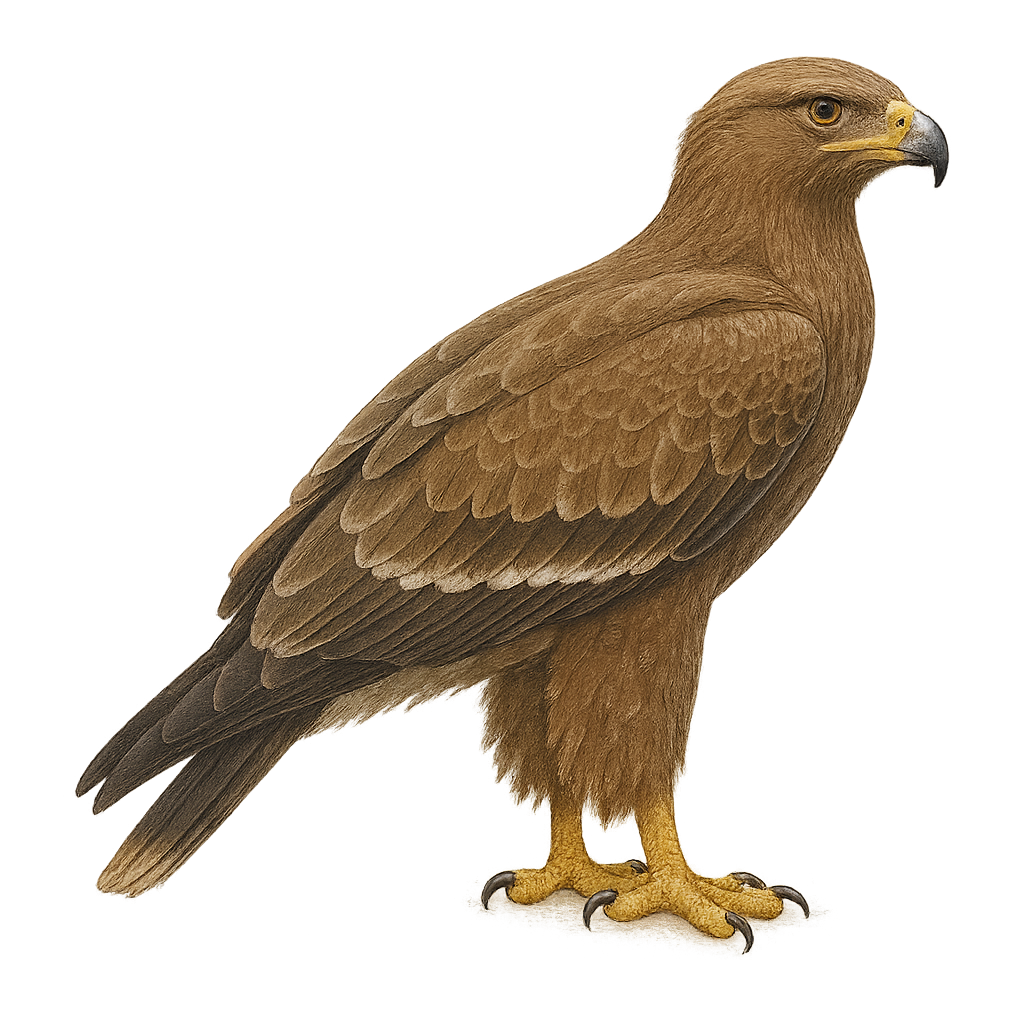Your wildlife photography guide.
Explore the steppe eagle in detail, study its behavior, prepare your shots.
Where to observe and photograph the steppe eagle in the wild
Learn where and when to spot the steppe eagle in the wild, how to identify the species based on distinctive features, and what natural environments it inhabits. The WildlifePhotographer app offers tailored photography tips that reflect the steppe eagle’s behavior, helping you capture better wildlife images. Explore the full species profile for key information including description, habitat, active periods, and approach techniques.
Steppe Eagle
Scientific name: Aquila nipalensis

IUCN Status: Vulnerable
Family: ACCIPITRIDAE
Group: Birds
Sensitivity to human approach: Suspicious
Minimum approach distance: 50 m
Courtship display: March to May
Incubation: 39-45 jours
Hatchings: April to July
Habitat:
Steppes, grasslands, savannas
Activity period :
Primarily active during the day, with peak activity in the morning and late afternoon.
Identification and description:
The Steppe Eagle, Aquila nipalensis, is a large and majestic bird of prey, easily identifiable by its dark brown plumage and broad, powerful wings. It has a lighter head and a strong beak, perfect for tearing its prey. This bird is primarily found in the steppes and grasslands of Central Asia, but migrates to Africa and South Asia during winter. An opportunistic predator, it feeds mainly on small mammals, birds, and carrion. Although it is a solitary hunter, it can sometimes be seen in groups during migration. Its population is declining, mainly due to habitat loss and poisoning.
Recommended lens:
400 mm – adjust based on distance, desired framing (portrait or habitat), and approach conditions.
Photography tips:
To photograph the Steppe Eagle, it is advisable to use a telephoto lens of at least 400mm to capture precise details without disturbing the bird. Opt for early morning or late afternoon hours to benefit from soft, golden light that will highlight the eagle's brown plumage. Be patient and discreet, positioning yourself at a distance of at least 50 meters to avoid scaring it away. Use a tripod to stabilize your camera and achieve sharp images, especially if working with slower shutter speeds.
The WildlifePhotographer App is coming soon!
Be the first to explore the best nature spots, track rutting seasons, log your observations, and observe more wildlife.
Already 1 439 wildlife lovers subscribed worldwide

